One of my favorite Portuguese foods is the famous pastel de nata! You'll enjoy making David's mouthwatering recipe for these tempting Portuguese custard tarts. It's hard to stop after eating just one!
If you want to try more Portuguese recipes, don't miss these tasty, authentic recipes for caldo verde (potato and chouriço soup), broas de mel (honey cookies), and bacalhau à Brás (a popular comfort food).
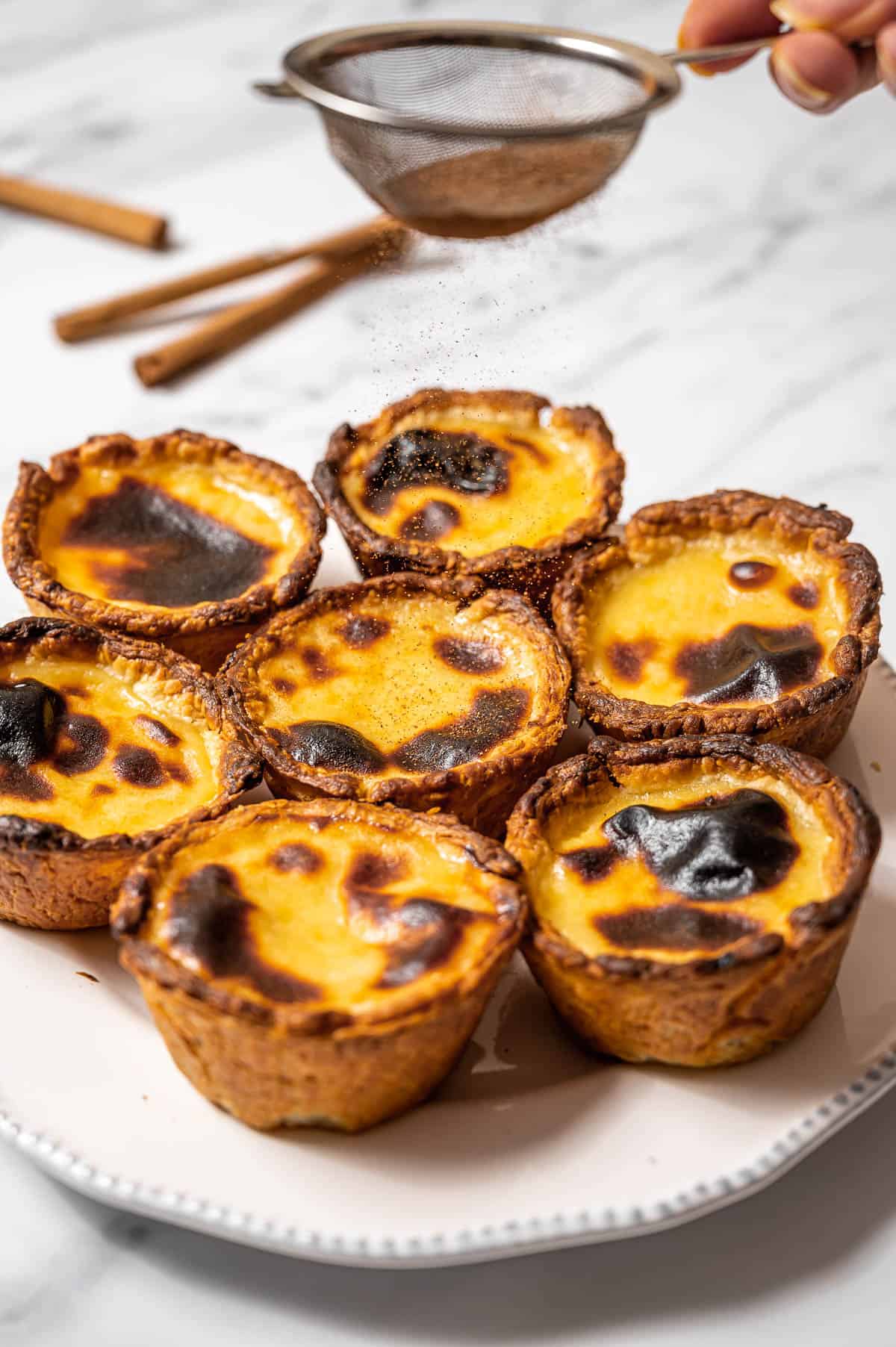
Jump to:
Introduction
Whenever I'm in Portugal, I know I'm coming back a few pounds heavier. Aside from all of the delicious seafood dishes, bowls of rice, and endless glasses of wine, Portugal is also home to my waistline's arch-nemesis: pastéis de nata (pastel de nata in the singular).
These Portuguese custard tarts are so delicious, that it’s hard to stop after eating just one! There’s something special about the combo of blistered, caramelized custard, and flaky golden brown puff pastry. Try one, and you'll want to make these again and again!
These famous custard tarts come from the Jerónimos Monastery, which is located in the town of Belém outside of Lisbon. You can read more about the history of Portuguese custard tarts if you’re curious!
Why This Recipe Works
- This recipe gives you as close a taste to the original as possible.
- These tarts are served warm dusted with cinnamon, which is the traditional method.
- This recipe is flexible so you can use pre-made puff pastry or make your own from scratch.
Ingredients
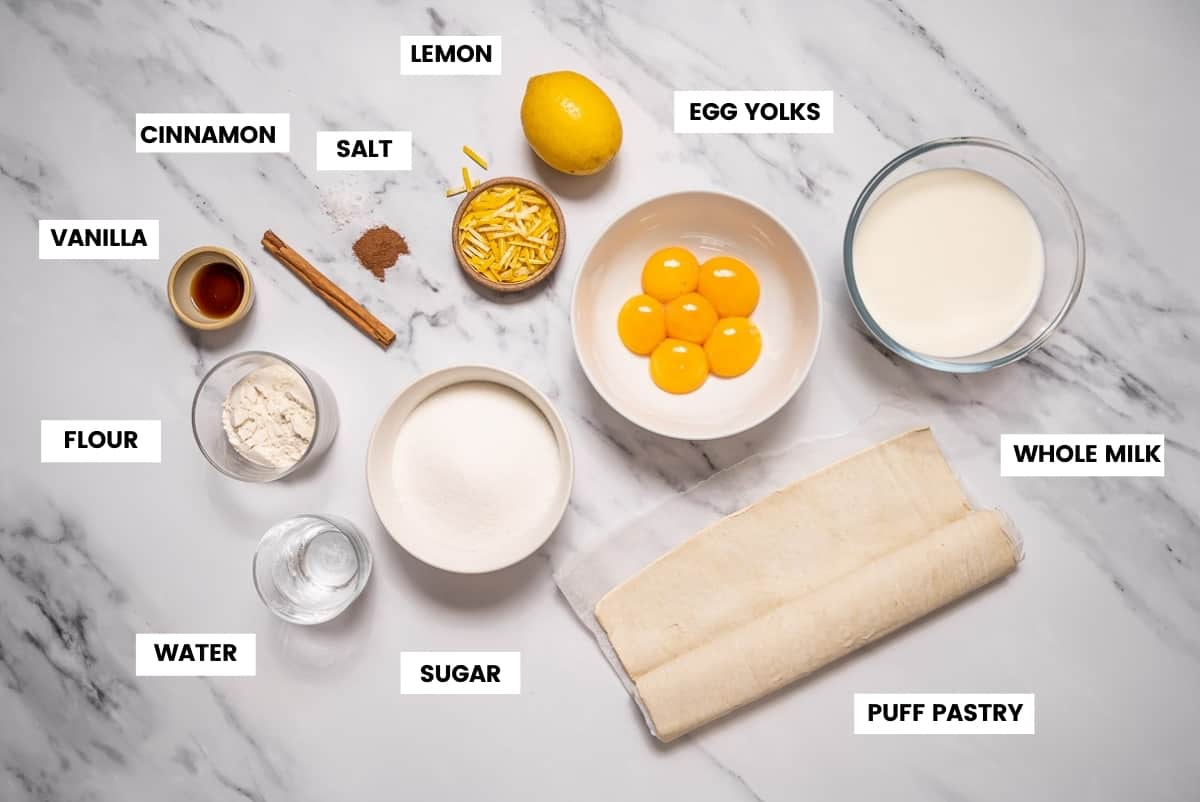
Curious what ingredients you need to make a batch of these pastéis de nata? Fortunately, it takes basic ingredients that are easy to find at your local grocery store. Let's talk about the most important ingredients for these Portuguese tarts.
- Egg Yolks: They add richness, color, and flavor to the custard in addition to thickening it.
- Flour: This is the main thickening agent in the custard next to the egg yolks. Feel free to swap for a gluten free alternative if desired.
- Puff Pastry: You'll use this to line a 12-hole muffin tin. Feel free to use store bought or homemade pastry--both are delicious.
See recipe card for full information on ingredients and quantities.
Variations
- Dairy Free: Use your favorite plant-based milk in the custard.
- Gluten Free: Swap the flour in the custard for cornstarch, and use gluten free pastry.
How to Make
If you’d like to see the full ingredients and instructions, scroll to the bottom of the post for the printable recipe card.
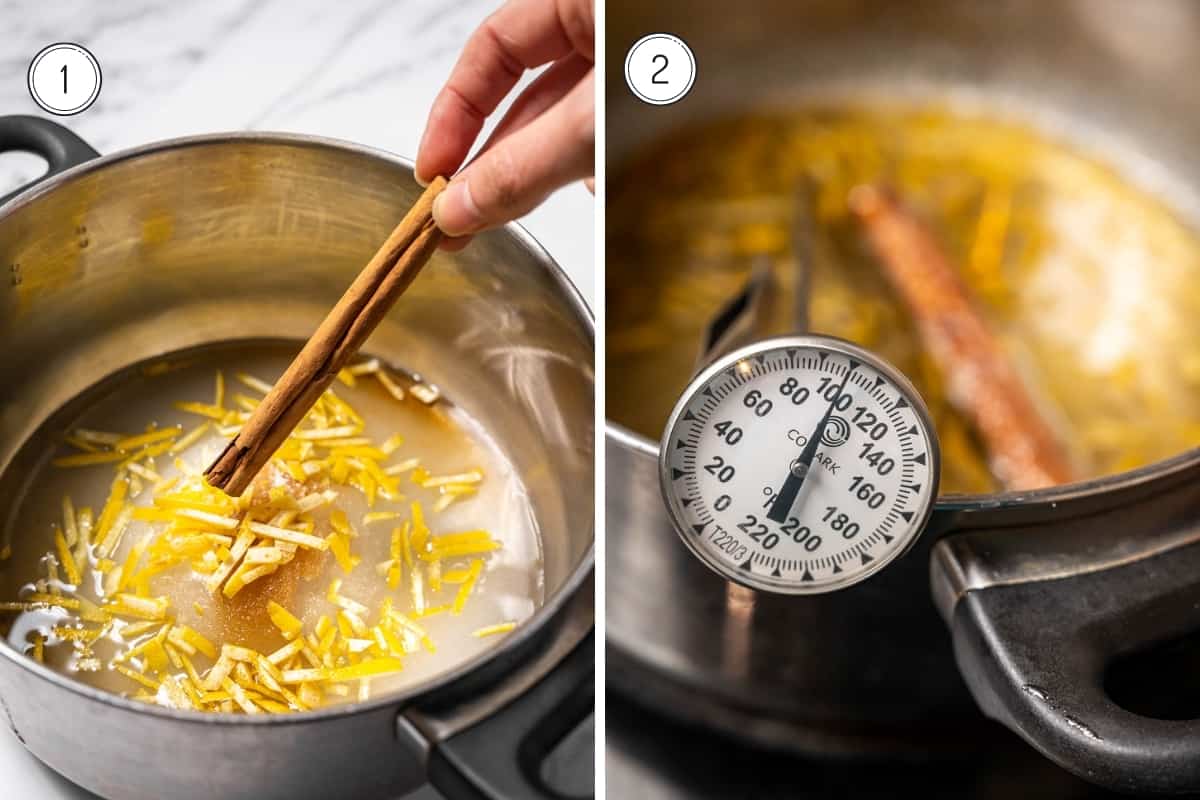
- Begin by making a sugar syrup. Combine the sugar, water, vanilla extract, lemon peel, and cinnamon stick in a saucepan.
- Cook over medium heat without stirring until the mixture reaches 220°F (100°C).
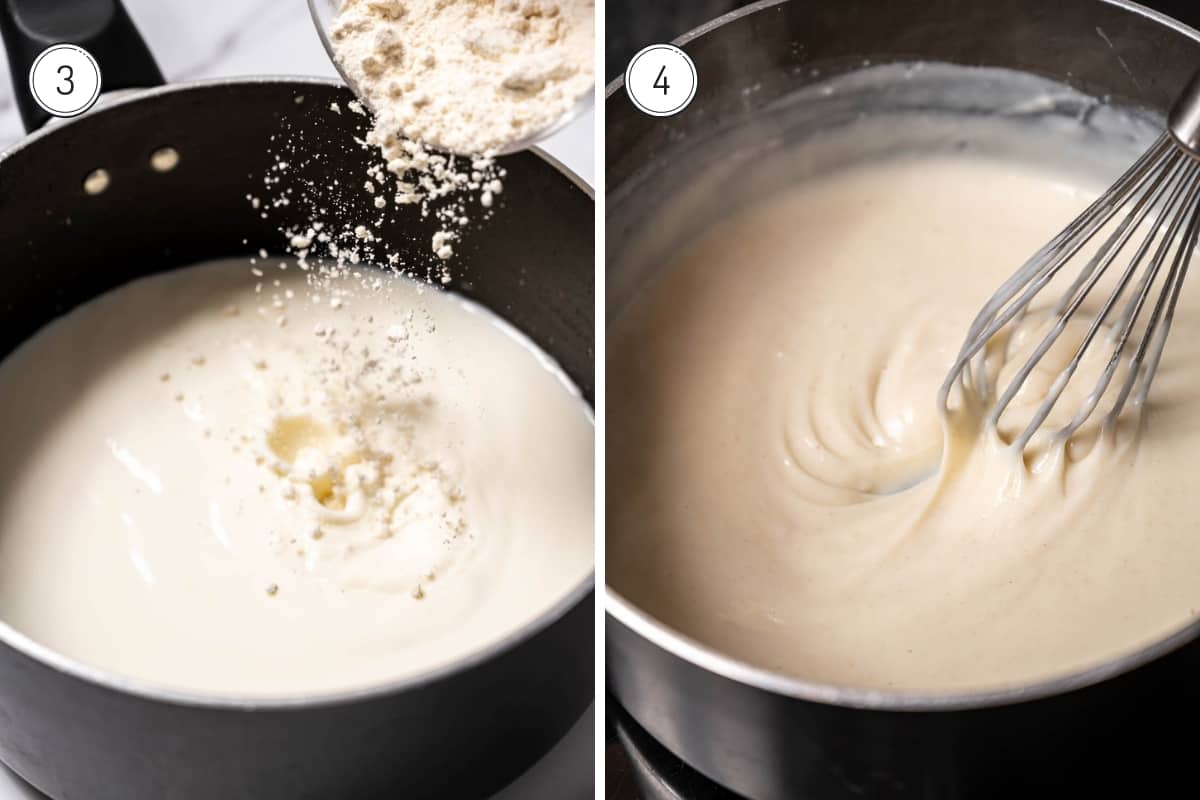
3. In a separate saucepan, whisk the milk, flour, and salt together until well combined.
4. Whisk constantly over medium heat until thickened, about 5 minutes. Remove from the heat and let cool for 10 minutes.
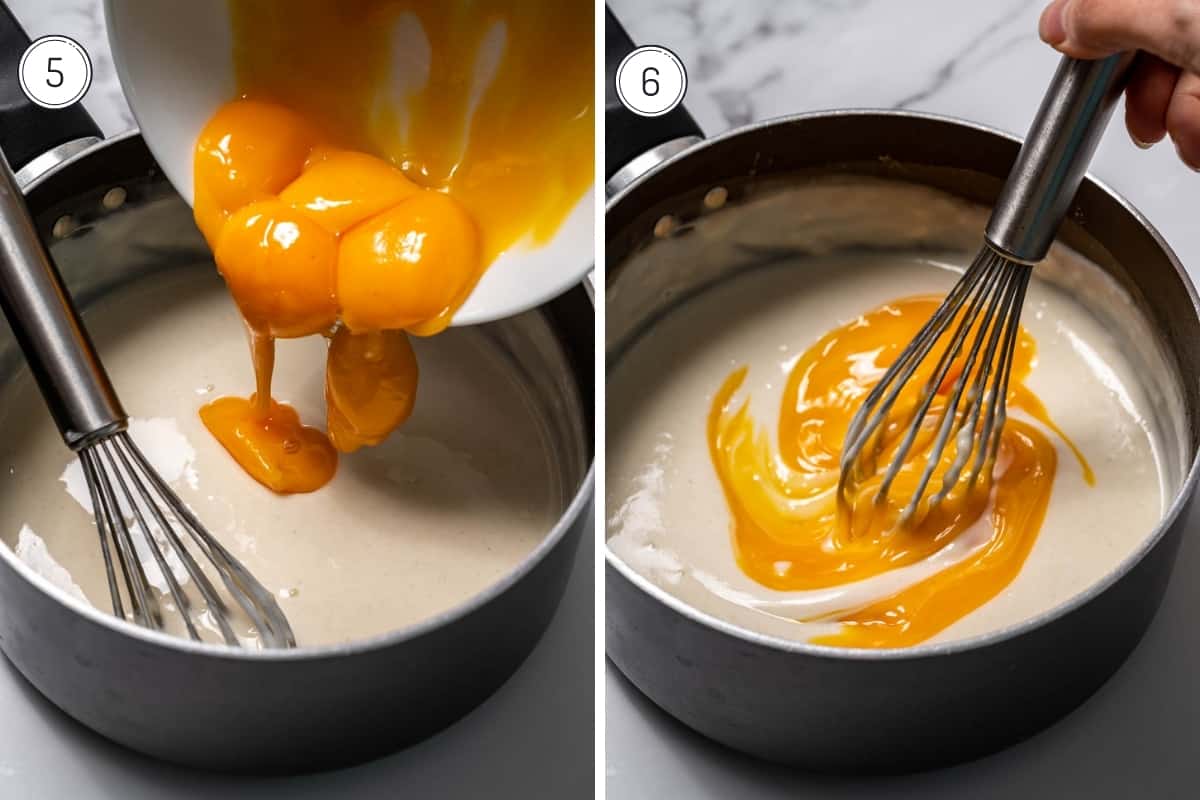
5. Add the egg yolks.
6. Whisk until well combined.
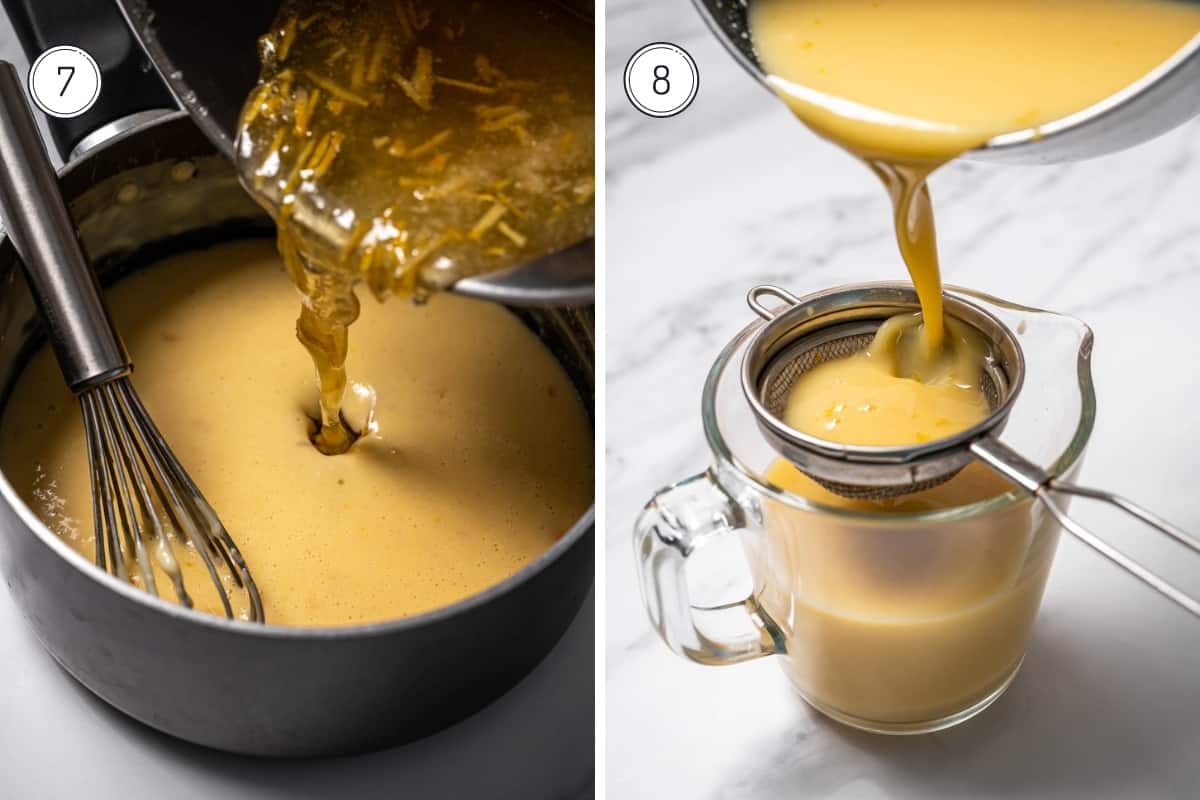
7. Remove the cinnamon stick from the sugar syrup and slowly whisk it into the milk mixture.
8. Strain the custard into a measuring cup with a spout to remove any lumps.
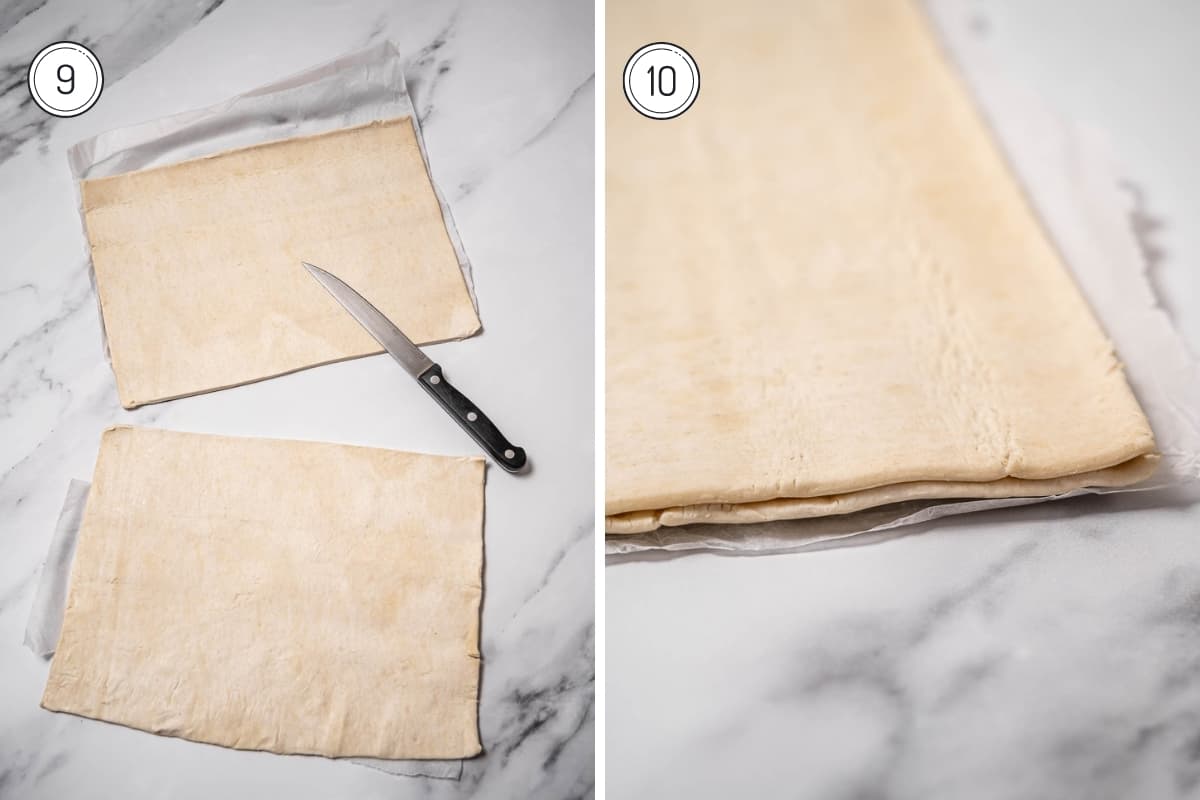
9. Cut the sheet of puff pastry in half.
10. Place one half on top of the other, then roll into a tight log from one of the short ends. Cut the log into 12 equal pieces (not pictured).
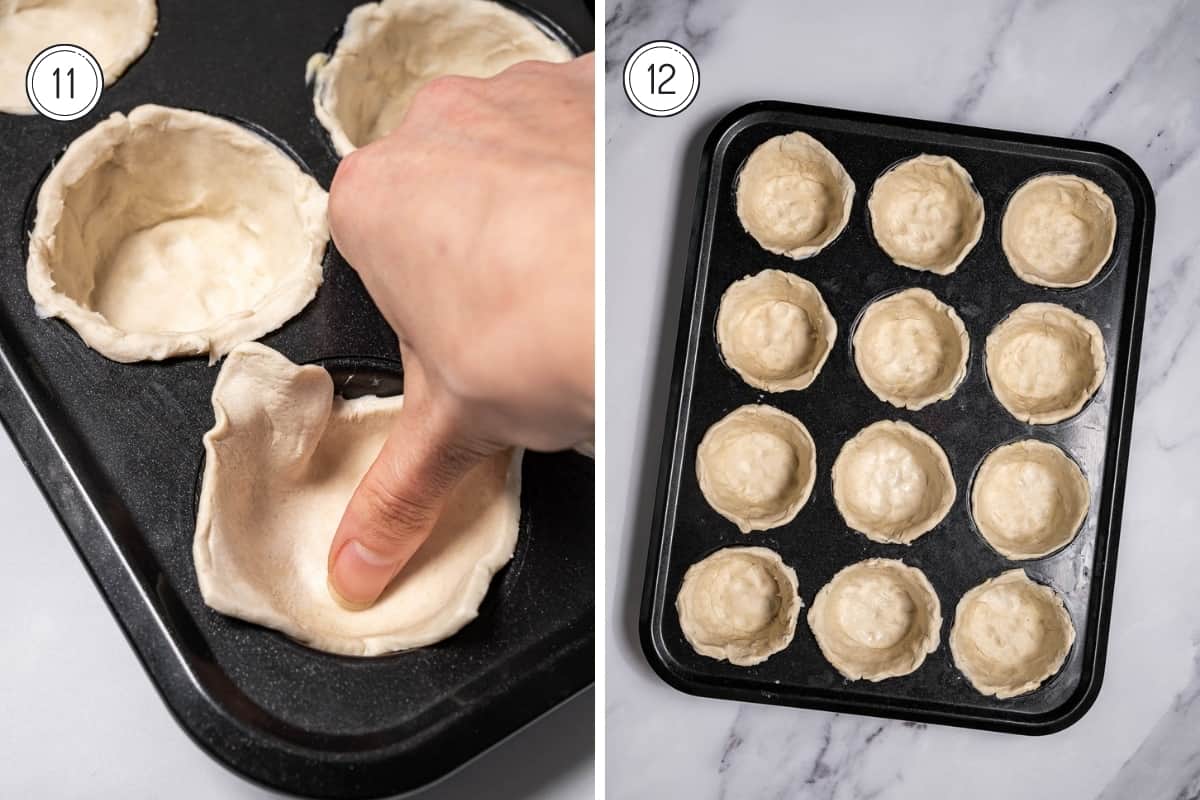
11. Press the 12 pieces of pastry into a greased muffin tin. Wet your thumb with cold water to keep the dough cool.
12. Make sure the dough extends slightly past the top of the tin.
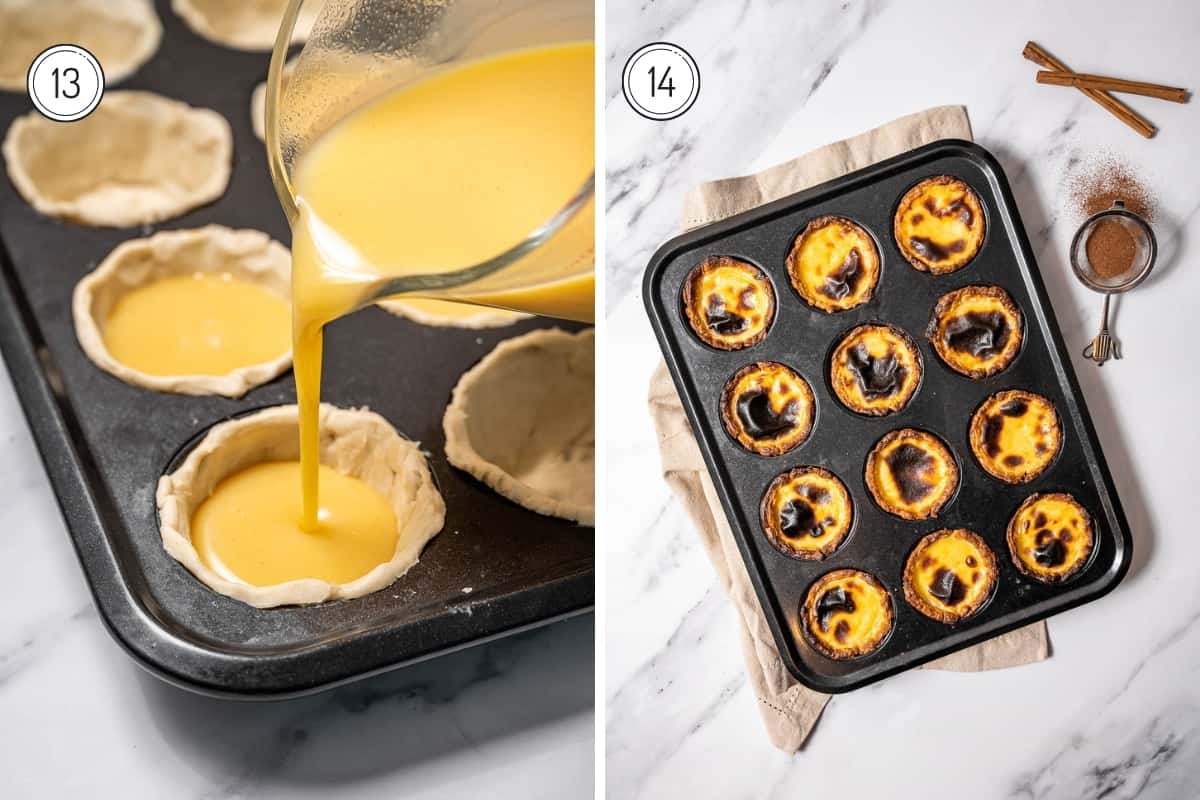
13. Fill each cup ¾ of the way with custard.
14. Bake at 550°F (290°C), or the highest your oven goes, for about 10-12 minutes. You want the custard to blacken a bit on top, as this is a sign of a true pastel de nata!
Recipe FAQs
The most popular dessert in Lisbon is these pastéis de nata. They have a creamy custard filling baked inside of a crispy, flaky pastry cup, and can be dusted with powdered sugar and cinnamon.
Yes, they are a popular breakfast item in Portugal, but can be enjoyed any time of day. Make sure to serve them with a cup of coffee like café con leche or espresso (known as bica in Portugal).
It's hard to describe the taste of these mouthwatering tarts! You'll love the creamy custard with its hints of lemon, vanilla, and cinnamon, as it contrasts perfectly with the beautifully flaky, crispy pastry.
It's best to serve pastéis de nata warm--preferably straight from the oven. This way, the custard filling is at a good temperature, and the pastry is still crispy and delicious.
Serve
A custard tart is perfect any time of day -- breakfast, snack, dessert... but always with a cup of coffee! I love it with a "bica" (espresso) but many of my friends go for a café con leche (or café com leite should I say!).
If you're looking for other Portuguese foods to try, don't miss out on ginjinha (sour cherry liqueur), this Francesinha recipe (a mountain of bread, meat, and cheese), and this caldo verde recipe (a comforting potato soup).
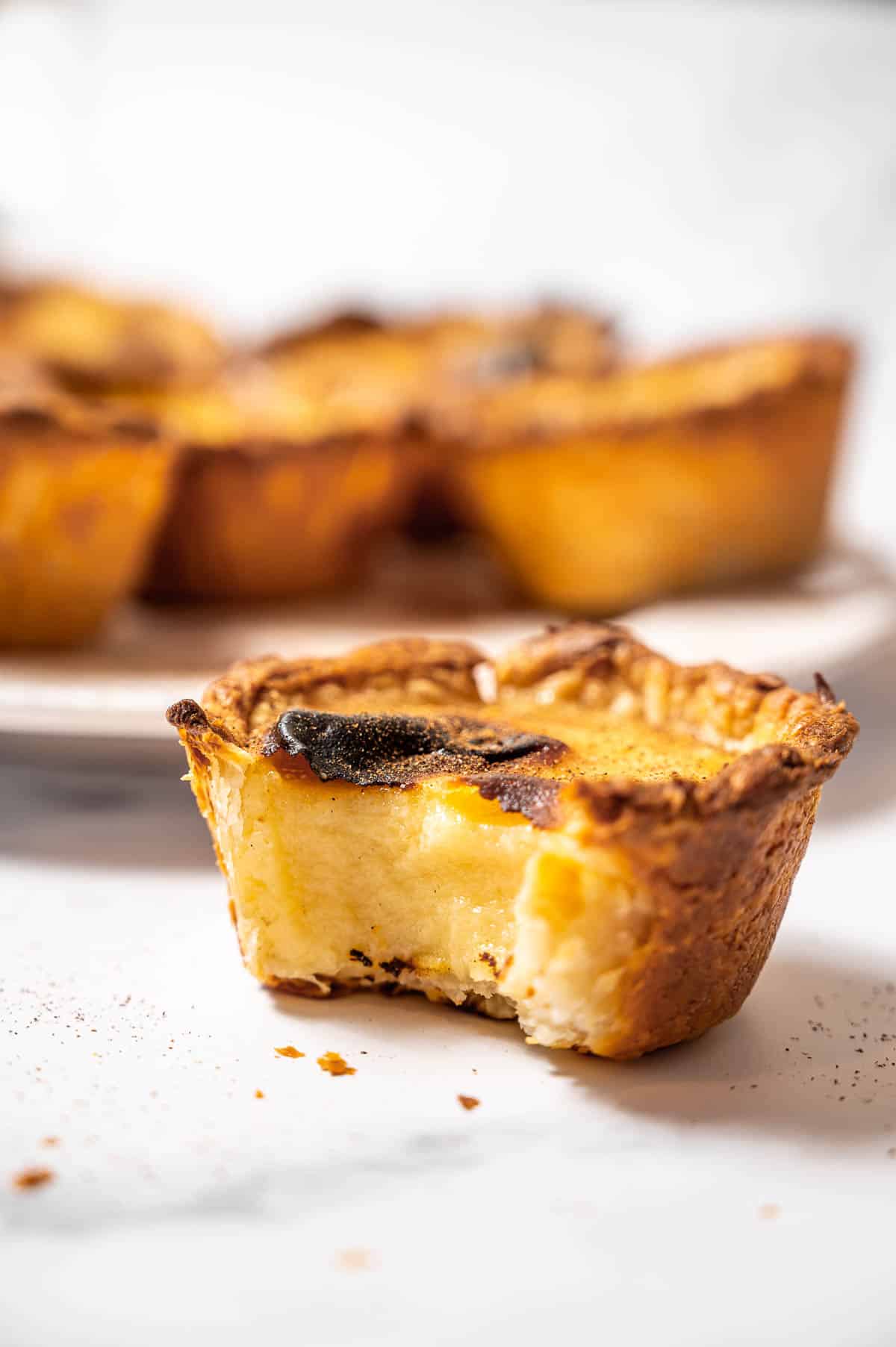
Store
Make Ahead: It's best not to make pastéis de nata in advance, as they taste best fresh out of the oven. Try making a small batch you can enjoy within a day or two.
Leftovers: Pastéis de nata will stay fresh in the fridge for up to 5 days, but the pastry will lose its crispiness after about 2 days.
Reheating: Before enjoying leftover tarts, bring them to room temperature, or pop them into a hot oven (400°F/200°C) for a minute or two, or until warm.
Freezing: Seal the tarts in an airtight container or freezer bag and freeze for up to 1 month. Even though you can freeze pastéis de nata, realize that they taste much better when eaten immediately.
Defrosting & Reheating: Defrost at room temperature, then reheat as described above.
Expert Tips
- Use a candy thermometer when making the custard for best results.
- Good quality, pre-made puff pastry works very well. Feel free to make your own if you would like for a more authentic touch.
- Use the convection setting on your oven if you have it. If your oven doesn't go to 550°F (260°C), simply put it at its maximum temperature.
More Portuguese Food & Recipes
If you liked this recipe, please share it with others!
Follow Spanish Sabores on Facebook, Pinterest, and Instagram for more recipes and travel tips.
If you've made and enjoyed this recipe, please leave a 5-star review!
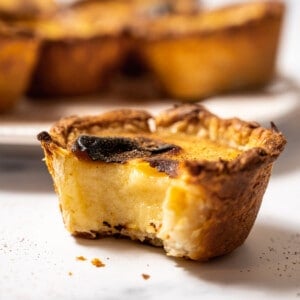
Pastéis de Nata (Portuguese Custard Tarts)
Ingredients
- ⅓ cup all-purpose flour
- ¼ teaspoon salt
- 1 ½ cups whole milk
- 1 ⅓ cups granulated sugar
- ⅓ cup water
- 6 large egg yolks
- 1 teaspoon vanilla extract
- 1 cinnamon stick
- peel of 1 lemon cut in thin strips
- 1 sheet puff pastry
- Ground cinnamon for dusting optional
Instructions
- Preheat the oven to 550°F (290°C), and lightly grease a 12-cup muffin tin.
- Bring the sugar, water, vanilla extract, lemon peel, and cinnamon stick to a boil in a medium, heavy-based saucepan. Cook without stirring until it reaches 220°F (100°C), then remove the cinnamon stick and take the pan off the heat.
- Meanwhile, in a separate saucepan, whisk the milk, flour, and salt until well blended. Whisk constantly and cook over medium heat until thickened, about 5 minutes. Remove it from the heat and let cool for 10 minutes.
- Once the milk mixture has cooled, whisk in the egg yolks, then add the sugar syrup and mix until everything is well combined. Pour through a sieve into a measuring cup to remove any lumps.
- Cut the puff pastry sheet into two pieces and place them on top of each other. Tightly roll the sheets into a log from the short side, then cut it into 12 evenly sized pieces.
- Place one piece of pastry in each of the 12 wells of the muffin tin. Dip your thumb in cold water, then use your thumb to press the pastry against the sides to form a cup. Make sure the pastry comes slightly above the edge of each well.
- Fill each pastry cup ¾ of the way with custard.
- Bake at 550°F (290°C) for 10-12 minutes. The tarts are done when the custard starts to caramelize and blister, and the pastry turns golden brown.
- Dust with powdered sugar and cinnamon if desired, and serve warm. Enjoy!
Notes
- Use a candy thermometer when making the custard for best results.
- Good quality, pre-made puff pastry works very well. Feel free to make your own if you would like for a more authentic touch.
- Use the convection setting on your oven if you have it. If your oven doesn't go to 550°F (260°C), simply put it at its maximum temperature.
Nutrition
Photography by Giulia Verdinelli


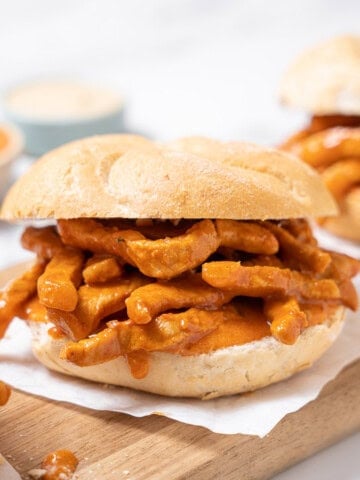
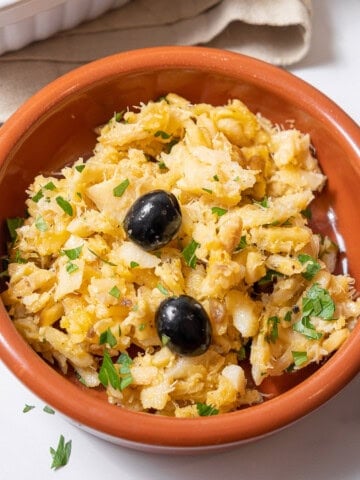

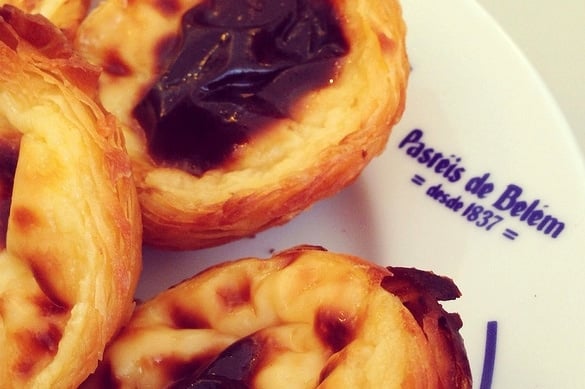

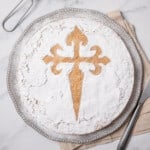

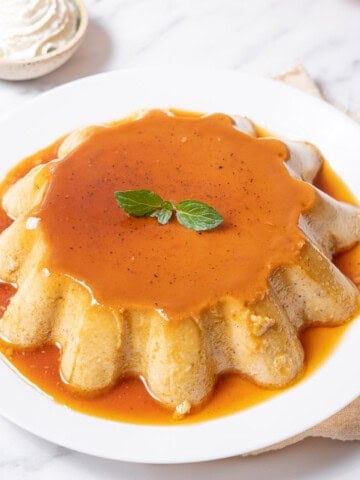
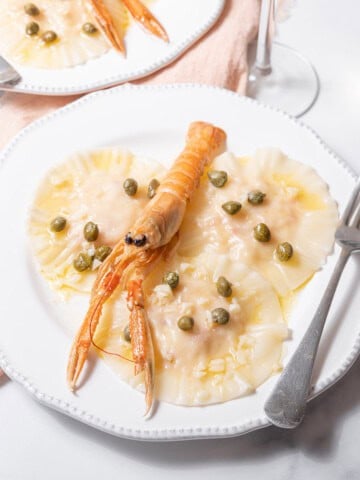
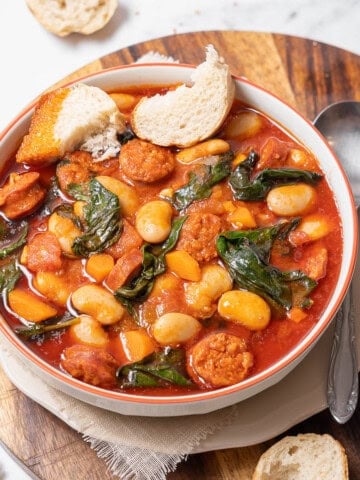
Rosie
Fantastic recipe and easy to follow. Just like the ones we’ve had in Portugal many times. Also had left over filling so next time I’ll just buy more pastry. Thank you!